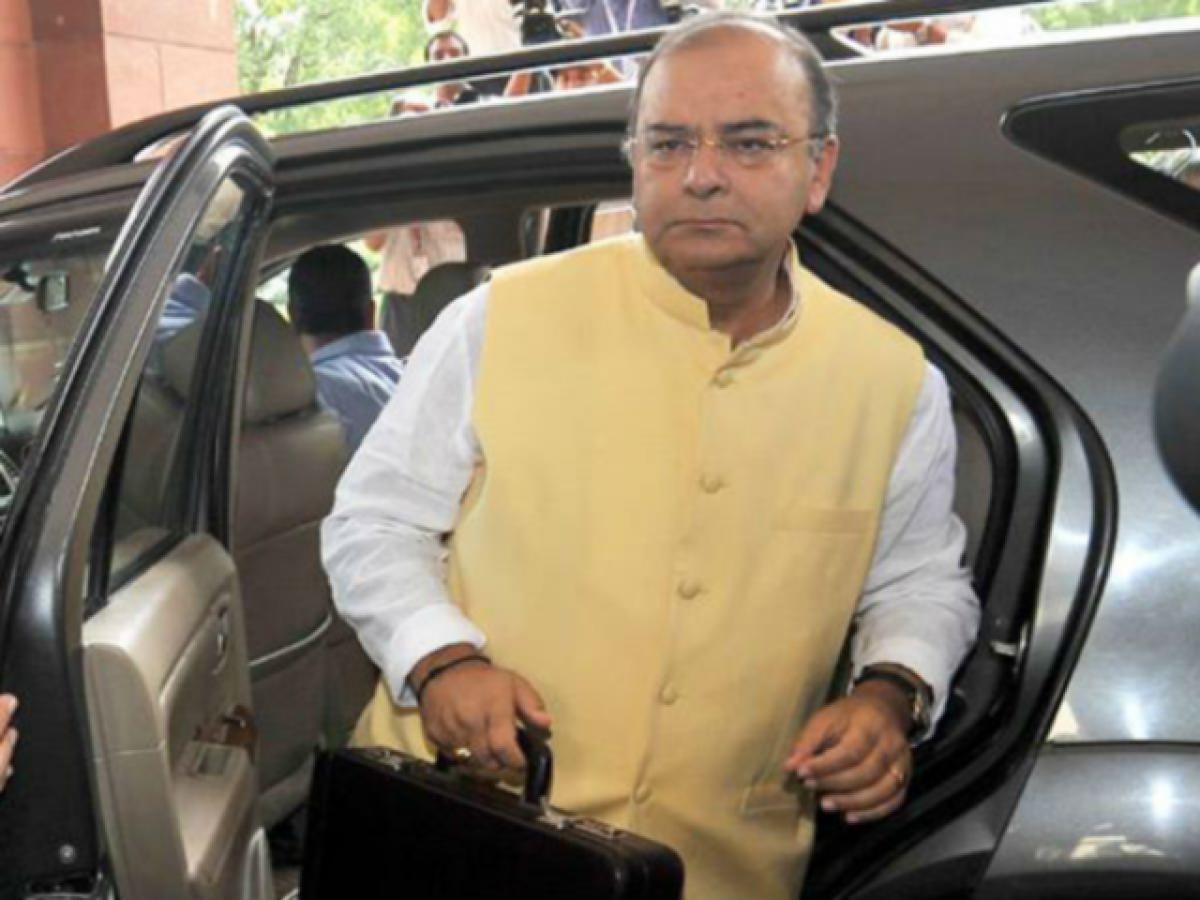Live
- Exhilarating ‘Benchmark’ of Venkat Changavalli
- Development activities worth `30 cr launched in Puthalapattu constituency
- Allegations against KTR baseless: BRS leader
- Megastar Chiranjeevi to Visit Allu Arjun’s Residence at 12 PM Today
- Nilima Rane: Trailblazer in Nursing
- Casual yet stylish office outfits for all-day comfort
- TTD to suspend all special darshans from January 10 to 19 amid Vaikuntha dwara darshans
- Naidu pats TDP leaders, cadres for enrolling 73L members
- Rupali Ganguly says for 20 years she never got an award
- Advanced anti-drone systems deployed for devotees’ safety at Mahakumbh
Just In

Regarding taxes, the Finance Minister has claimed that he has met his target. What he hides is that it has been met by largely hiking up the customs duty on oil imports. Instead of passing on the benefits of reduced oil prices to consumers, the FM mopped up a whopping Rs 54,000 crore through higher customs duty. Conversely, the revenues from corporate and personal income taxes have fallen far sho
Regarding taxes, the Finance Minister has claimed that he has met his target. What he hides is that it has been met by largely hiking up the customs duty on oil imports. Instead of passing on the benefits of reduced oil prices to consumers, the FM mopped up a whopping Rs 54,000 crore through higher customs duty. Conversely, the revenues from corporate and personal income taxes have fallen far short of the budget estimate – by the huge sum of nearly Rs 46,000 crore
The Modi government has been termed as a government of managing newspaper headlines. Instead of managing the country, the focus is on how to manage the news. Jaitley's Budget 2016 follows in the same mode, a number of claims, which on further examination appears just shifting figures from one column to another. It is, as the CPI(M) press statement says, “a budget without a vision.”
Regarding the fudged claims, MNREGA is an example. The Finance Minister claimed it is the highest MNREGA allocation yet. Wrong. The expenditure for 2011-12 was higher, it was Rs 39,337 crore against Rs 38,552 crore in this budget. Worse, if we want to maintain the same level of employment as in 2011-12, it would need to be Rs 65,000 crore; so this allocation is a drastic cut in real terms. After the drought of last two years, it was proposed to increase the MNREGA days per person, from the initial commitment of 100 days to 200 days. Instead, it has decreased now to a measly 38 days.
Regarding taxes, the Finance Minister has claimed that he has met his target. What he hides is that it has been met by largely hiking up the customs duty on oil imports. Instead of passing on the benefits of reduced oil prices to consumers, the FM mopped up a whopping Rs 54,000 crore through higher customs duty. Conversely, the revenues from corporate and personal income taxes have fallen far short of the budget estimate – by the huge sum of nearly Rs 46,000 crore. The impact of such a shortfall is that it reduces the transfers to the states that the last budget had promised, while keeping the increased taxes in the central kitty.
This budget continues the policy of increasing indirect taxes that puts the burden on the consumers, i.e., the general people, while reducing direct taxes or the “burden” on the rich. The direct tax proposals will lead to a revenue loss of Rs 1,060 crore; indirect tax proposals are to yield Rs 20,670 crore.
While the budget proposals talk about increasing allocation for various ministries such as infrastructure, agriculture, etc., this is by a sleight of hand. The allocations for capital investments for various sectors have actually gone down. For infrastructure, the capital expenditure in 2015-16 was lower than budgeted, and is proposed to be kept at almost the same level in 2016-17, implying a reduction in real terms, and as a share of GDP – from 1.8 to 1.6%.
Apart from various cuts on critical areas such as Integrated Child Development Services, food and fertiliser subsidies, there are huge shortfalls in school and higher education. From an allocation of Rs 69,794 crore for school education in 2015-16, it has dropped to Rs 63,826 crore in this budget, a drop of almost 10%. The higher education also has a similar order of cuts. The sharpest cut in higher education is on University Grants Commission, IITs, IIM and NITs – a cut of more than 50%.
In the Scheduled Caste Sub-Plan, the expenditure has been pegged at 7% of the total, when it should have been 16.6%, a shortfall of Rs 52,470 crore. The expenditure on Tribal Sub Plan, which is supposed to be 8.6 % of the plan expenditure, is only 4.4% – a shortfall of Rs 24,000 crore. So is the allocation for Minorities.
The other worrying part of the budget is the “promise” of divestments of public sector, liberalising FDI in insurance and decentralising, read privatisation, of food grain procurement. All these measures would expose the Indian people to the vagaries of the global market.
Given that Indian exports are falling, so is industrial production, one expected the Finance Minister to increase spendings and stimulate the economy. Not only has that not happened, we have the sterile mantra of “fiscal responsibility” and reducing budget deficit as a goal.
It is nonsense to talk of this budget being pro-poor or pro farmer. All in all, this budget has the hall-mark of the current government – all hype, no substance.
(Courtesy: Newsclick)

© 2024 Hyderabad Media House Limited/The Hans India. All rights reserved. Powered by hocalwire.com







